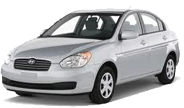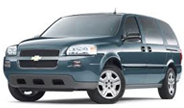HIGHWAY TRAFFIC ACT
Traffic in English is taken from the Arabic word taraffaqa, which means to walk along slowly together. Traffic on a public way may consist of heavy motor vehicles (for instance, car, truck), streetcars, other vehicle (for instance, moped, bicycle), pedestrians, ridden or herded animals, and other conveyances. Organized traffic generally has well-established priorities, lanes, right-of-way, and traffic control at intersections. Organized traffic has lanes, junctions, intersections, interchanges, traffic signals, or signs. Organization typically produces a better combination of travel safety and efficiency.
Events which disrupt the flow and may cause traffic to degenerate into a disorganized mess include: road construction, collisions and debris in the roadway. On particularly busy freeways, a minor disruption may persist in a phenomenon known as traffic waves. A complete breakdown of organization may result in traffic jams.
Driving on the Right Side of the Road
In Ontario, as well as in Canada and US, vehicles must drive on the right side of the road. On multi-lane highways, the furthest left lane is the passing lane and is often designated for drivers whose speed is higher than those driving in the right lane.
Express and Collectors
On some Ontario highways, like the 401, the 407 and the 404, the highway is divided into an Express section and a Collectors section. Express lanes and collector lanes are a set of two same-direction one-way multi-lane roadways. The outer set is usually called Collectors and provides access to most or all interchanges. The inner set is called Express and provides for non-exiting traffic. The Express has fewer exit and entry points than the Collectors, and cars typically drive at a higher speed in these lanes. Multiple exit routes are gathered together in the Express, allowing for these fewer exit and entry points. When exiting the Express lanes, drivers are exited back to the Collectors lanes, where they choose their specific exit.
On Highway 427 in Toronto, the express lanes are intended for traffic passing through the area and exclusively have the ramps to other highways, while the collector lanes are designed strictly to serve interchanges within that area.
Another main purpose of having a collector-express system is to “squeeze” two highways into one corridor. Often the collector lanes serve primarily as the direct connectors or ramp extensions, and the express lanes are designed for “through traffic”. Highway ramps or transfers usually connect the local and express lanes. If one highway ramp crosses over another, the result is known as a braid or basket weave.
Highway Traffic Act
Traffic laws are the laws which govern traffic and regulate vehicles, while rules of the road are both the laws and the informal rules that may have developed over time to facilitate the orderly and timely flow of traffic.
The Highway Traffic Act (HTA) is an Ontario Act which regulates the licensing of vehicles, classification of traffic offenses, administration of loads, classification of vehicles and other transport related issues. First introduced in 1923 to deal with increasing accidents during the early years of motoring in Ontario, there have been amendments due to changes to driving conditions and new transportation trends. The latest revision (2009) to the act was added to ban use of cell phones in cars.
Permits
According to the Highway Traffic Act, no person shall drive a motor vehicle on a highway without valid permit for the vehicle that has to be displayed on the vehicle in the prescribed manner. The number plate has to be issued in accordance with the regulations showing the number of the permit issued for the vehicle.
Licence/License
Driving is a privilege, not a right. The privilege of driving on a highway is granted to, and retained by, only those persons who demonstrate that they are likely to drive safely. No person shall drive a motor vehicle on a highway unless the motor vehicle is within a class of motor vehicles in respect of which the person holds a driver’s licence issued to him or her.
Auto Insurance
Every passenger-plated vehicle has to have mandatory insurance. Effective November 29, 2010, Ontario will electronically verify with the Insurance Bureau of Canada, if a passenger-plated vehicle has mandatory insurance coverage during the licence plate renewal process. In addition, every commercial motor vehicle has to have Liability insurance that is being used to transport goods for compensation.
Authority
The Highway Traffic Act gives Ontario police officers the legal power to direct traffic when they find it appropriate. It also gives the Ministry of Transportation power to make regulations regarding posting of signs and traffic control devices.
Speed Limit
The Highway Traffic Act sets speed limits: on most Ontario highways the speed limit is 100km/hour; within a local municipality or a built-up area the speed limit is 50km/hour. In some areas, 80km/hour is the limit. The rate in school zones and construction zones also differ. The speed limit would be as posted within that particular area of highway. For school zones, 150m of the road to and from the entrance or exit of a school is usually designated for lower speed limits when the school is active.
Toll Roads
Highway 407 Express Toll Route (ETR) is the only toll road in Ontario. It runs 108km in length but has more than 1,070km of lanes, according to the 407 ETR official website. The 407 is run electronically. As you drive onto the 407, an overhead gantry automatically records the beginning and end of your trip. This information is used to calculate the cost of your drive through the highway. Drivers who often use the 407 may sometimes have transponders, a small electronic device that saves driver’s money on toll charges.
The Highway Traffic Act also sets the laws and rules on the following:
- Rules of the road
- Equipment
- Medical transportation services
- Civil proceedings
- Suspension for failure to pay judgments or meet support obligations
- Records and reporting of accidents and convictions
- Photo-radar system evidence
- Red light camera system evidence
- Procedure, arrests and penalties
If you got a traffic ticket you might seek assistance from a paralegal that specialize in defending traffic ticket cases. The paralegal has to be licensed by the Law Society of Upper Canada. It is always a good idea to hire CP Paralegal Solutions to fight your traffic ticket. For more information please visit www.paralegaltoronto.ca
Car Rental Toronto 4U provides clean, reliable, late model used cars, pickup trucks, vans, minivans, and sport utility vehicle or SUV for short or long term vehicle rental and lease. Always check with www.CarRentalToronto4U.ca for moving, business needs, vacation car and pickup truck rentals, college and university special student rates for Toronto car rental.
 Hyundai Accent (or similar)
**Daily Rate $29.99**
Hyundai Accent (or similar)
**Daily Rate $29.99**
 Ford Taurus (or similar)
Ford Taurus (or similar)
 Chevy Uplander (or similar)
**Monthly Rate $800.00**
Chevy Uplander (or similar)
**Monthly Rate $800.00**

 on your next rental
on your next rental